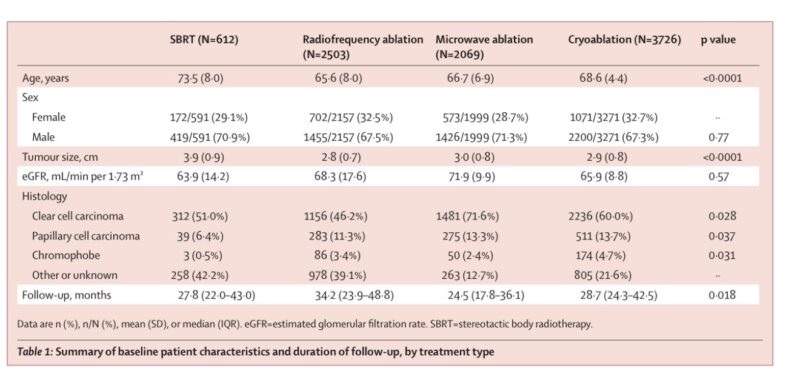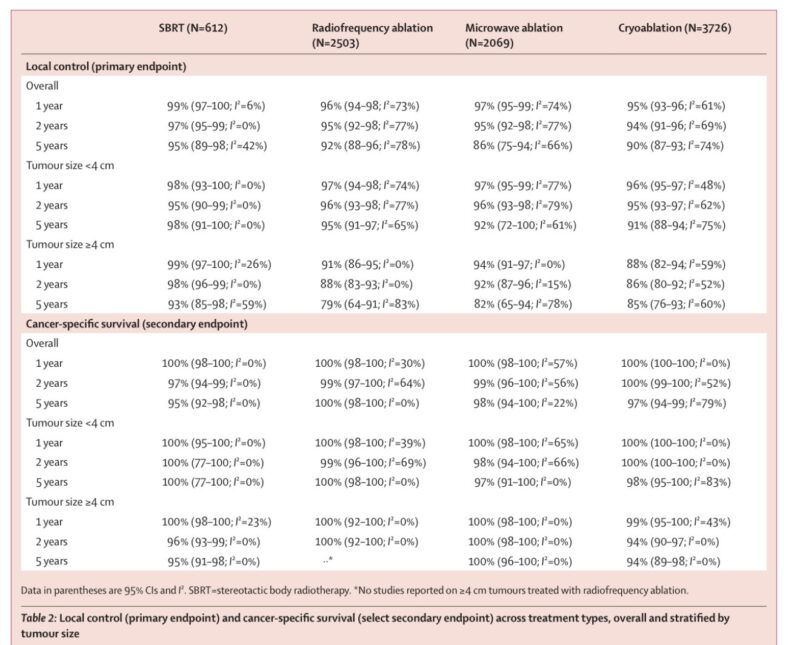Gustavo Viani, Professor of Radiation Oncology at Ribeirão Preto Medical School, shared a post on X about a paper by Ryan Huang et al. published in The Lancet Oncology:
Authors: Ryan Huang, Ronald Chow, Ali Benour, Michael Lock, Srinivas Raman et al.

“SBRT vs. Ablation for Kidney Cancer: A Game-Changer?
Ablative therapies for localized renal cell carcinoma (RCC): What’s the best approach?
A new Lancet Oncology study compares SBRT, radiofrequency ablation (RFA), microwave ablation (MWA), and cryoablation. How do these stack up? Let’s break it down.
Why does this matter?
Surgery remains the gold standard for RCC, but many patients are not surgical candidates. Ablative therapies offer non-invasive options, but which one is best?
This meta-analysis (133 studies, 8910 patients) provides the most comprehensive comparison yet!
What was studied?
- Local control rates
- Cancer-specific survival
- Safety and adverse events
- Renal function outcomes Treatments compared:
- SBRT (Stereotactic Body Radiotherapy)
- RFA (Radiofrequency Ablation)
- MWA (Microwave Ablation)
- Cryoablation
Are all RCC treatment groups equal? Not quite:
- SBRT older patients (mean age: 73.5 vs. 65.6 for RFA)
- SBRT treated larger tumors (3.9 cm vs. 2.8 cm for RFA)
- MWA patients had better kidney function (eGFR: 71.9 vs. 63.9 for SBRT)
- Sex distribution was similar across groups (67-71% male)

Key Results: Local Control
At 5 y, SBRT had high local control (95%)
Other methods at 5 y:
- RFA: 92%
- MWA: 86%
- Cryoablation: 90%
Tumor size matters
- T<4 cm, all methods performed well
- T ≥4 cm, SBRT had the best control (93%), while RFA was low (79%)

Survival Outcomes:
At 1y, OS ~100% across all methods
At 5 y, OS remained high but varied:
- SBRT: 95%
- RFA: 100%
- MWA: 98%
- Cryoablation: 97%
Selection bias is at play!
SBRT was likely chosen for older, high-risk patients with larger tumors.
Safety: Adverse Events
Grade 3-4 adverse events:
Cryoablation: 3% (highest)
- RFA: 2%
- MWA: 1% (lowest)
- SBRT: 2%
Cryoablation had significantly high severe complications no other techniques
Renal Function Impact
Significant differences in renal function decline (eGFR) between treatment groups at 1, 2, 5 years

What does this mean for clinicians?
- All methods effective for RCC
- SBRT may be ideal for larger tumors (≥4 cm)
- Cryoablation has a high complication rate
- Treatment should be personalized based on patient factors
How does this fit into the latest trends in RadOnc?
- SBRT continues to expand beyond lung and prostate
- More evidence supports SBRT for kidney cancer, especially for larger or surgically inoperable tumors
- Could this change the standard of care for non-surgical RCC
Future Directions
- We need RCT comparing SBRT vs. RFA/MWA
- More data is needed to standardize dose/fractionation protocols
- Cost-effectiveness studies could influence real-world adoption
Final Takeaway
- Ablative therapies are viable alternatives to surgery for RCC
- SBRT shows good potential, especially for larger tumors
- Thermal ablation remains effective for small lesions
Will we see SBRT take the lead in non-surgical RCC management? Let’s discuss!”
More posts featuring Gustavo Viani.
